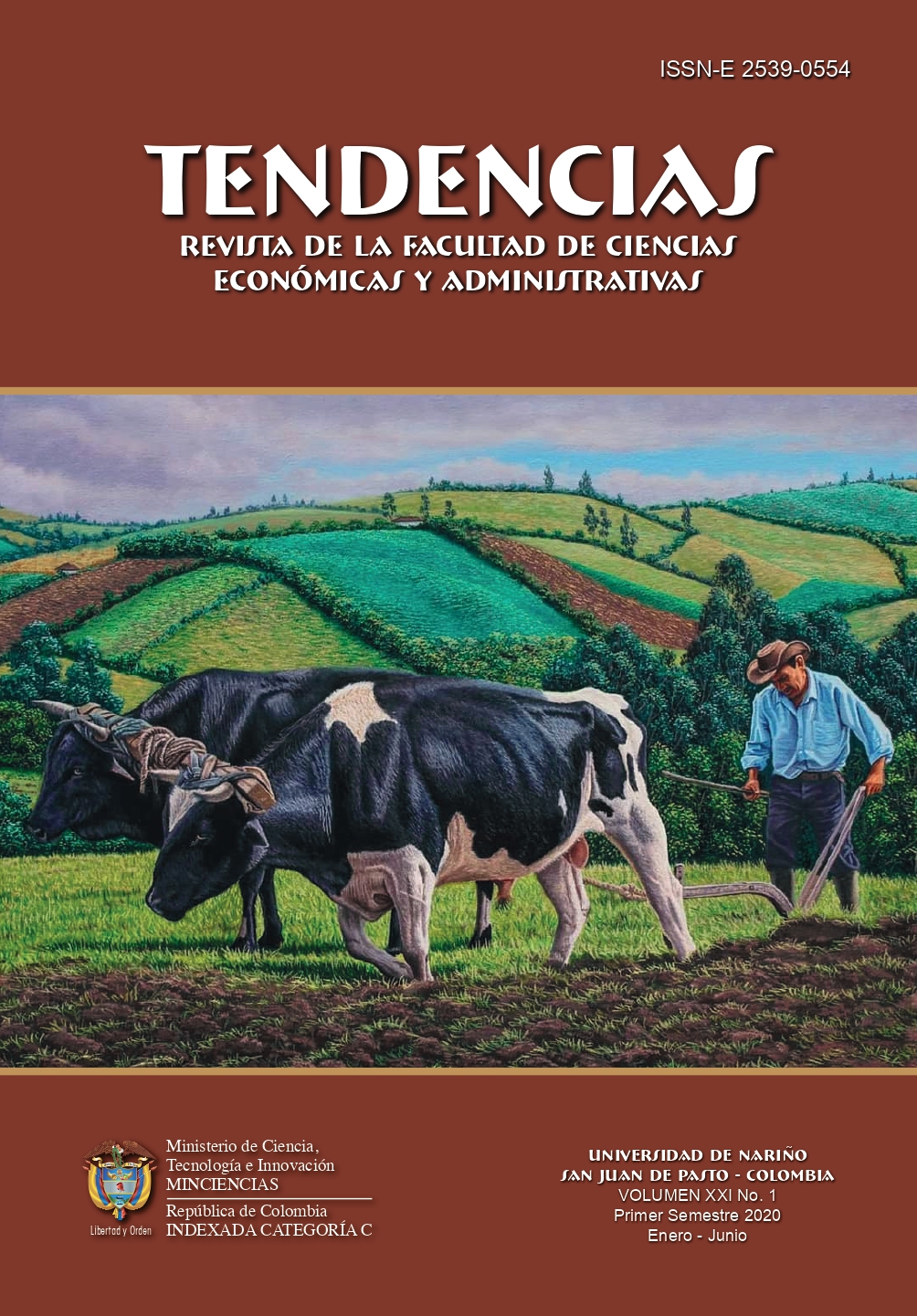Playfulness and design, an emerging economic scenario in the national and regional context
DOI:
https://doi.org/10.22267/rtend.202101.129Keywords:
playful, design, experience, emerging economies, gamificationAbstract
Historically, the dynamics of play were associated with exclusively pedagogical and didactic settings. Currently the playful and its mechanics have achieved a space of considerations from the design, which has allowed it to become a differential and alternative factor in the development of products, goods and services on the national and regional stage. The purpose of this article is to highlight these emerging spaces of play as a resource of design in the economic field, describing their importance and the possibility it offers in aspects such as innovation and user experience. From this perspective, the conception of a design with a playful approach as a methodological platform becomes a broad field traced by transdisciplinary elements that suggest the active presence of different research perspectives and action methods. From different cases that are paradoxical and official reports from national and regional entities; the emergence of economies that consolidate their activities is evident from the playful mechanics generated from the design. In sum, this article points out the current incidence of these new commercial dynamics supported by the dynamics of leisure and which are intended to become alternatives in the diversification of markets and that positively affect the development of the country and the region.
Downloads
References
(1) Baudrillard, J., Boudon P, y Moles A. (1974). Los objetos. Buenos Aires. Editorial: Tiempo contemporáneo.
(2) Bbva Game, Disponible en: https://www.bbva.com/es/la-gamificacion-jugar/
(3) Carrera de la Mujer (2018). disponible en: https://www.carreradelamujercolombia.com/tiempoparati.php
(4) Cisna. Centro de innovación social de Nariño. Disponible en http://innovacionsocial.xn--nario-rta.gov.co/
(5) Deterding, S., Dixon, D., Khaled, R., y Nace, L. (2011). Gamification: Toward a definition. Disponible en: http://gamification-research.org/wp-content/uploads/2011/04/02-Deterding-Khaled-Nacke-Dixon.pdf
(6) Dussel, E. (1984). Filosofía de la producción. Bogotá. Ed Clacso.
(7) Huizinga, J. (2012). Homo Ludens. Traducción de Eugenio Imaz. D.F. México. Fondo Mixto de Cultura. Editorial.
(8) Especialización en Diseño de experiencias lúdicas, (2020). Resolución 008250 del 27 de mayo. Ministerio de Educación Nacional de Colombia. Disponible en https://periodico.udenar.edu.co/men-otorga-registro-calificado-programa-especializacion-experiencias-ludicas-facartes/
(9) González, C., Torres, R. (2012). Diseño & Consumo en la sociedad Contemporánea. México DF. México. Ed: Designio
(10) Krippenddorf, K. (2016). Rediseñar el diseño una invitación a un futuro responsable. Disponible en: http://infolio.es/articulos/krippendorff/redesign.pdf
(11) La economía creativa. Ley naranja. Ley 1834 de 23 de mayo de 2017, de economía naranja. Disponible en: https://dapre.presidencia.gov.co/normativa/normativa/LEY%201834%20DEL%2023%20DE%20MAYO%20DE%202017.pdf
(12) Liga Colombiana contra el cáncer. Disponible en: https://www.ligacontraelcancer.com.co/
(13) Messi park (2020). South China Morning Post. Disponible en: https://www.scmp.com/news/china/society/article/2114991/first-look-chinas-lionel-messi-soccer-theme-park
(14) Metodología Lego Serious Play. Disponible en: https://seriousplaylatam.com/index.php/eventos-empresariales/lego-serious-play
(15) Ministerio de Cultura Colombia. Porqué es importante la economía naranja en Colombia. Disponible en: https://www.mincultura.gov.co/prensa/noticias/Documents/atencion-al-ciudadano/_ABC_ECONOMI%CC%81A_NARANJA_.pdf
(16) Nike+, (2016). disponible en: https://www.nike.com/xl/es_la/c/nike-plus/running-app-gps
(17) Norman, D. (2005). The Emocional Design. Why we love (or hate) everyday things. New York. Ed. Basic Books.
(18) Piaget, J. (1961). La formación del símbolo en el niño. México: Ed. F.C.E.
(19) Plan de Desarrollo Gobernación de Nariño. Colombia. Disponible en: https://nariño.gov.co/inicio/index.php/gobernacion/plan-de-desarrollo/354-plan-de-desarrollo-departamental-narino-corazon-del-mundo-2016-2019
(20) Programa: Pasto educado constructor de paz. Disponible en: https://xn--nario-rta.gov.co/inicio/index.php/gobernacion/ppasto%20educado%20contructor%20de%20pazlan-de-desarrollo/354-plan-de-desarrollo-departamental-narino-corazon-del-mundo-2016-2019
(21) Ramírez, C. (2011). Propuesta metodológica para el desarrollo de productos. Rev. Pensamiento & gestión, 30. Universidad del Norte. pp 21-45.
(22) Rodríguez, J. (2007). 50 Años del Juguete Industrial Colombiano. Trabajo Monográfico de Investigación. Universidad Nacional de Colombia.
(23) Serrano, M. (2013). Design Thinking. Lidera el futuro. Ed. Alfaomega. Cdmx, México.
(24) Simon, H. (2006). Las Ciencias de lo Artificial. Madrid. España. Ed. Comares
(25) The fun theory. Disponible en: https://gestion.pe/blog/consumerpsyco/2014/01/the-fun-theory-la-diversion-co.html/
(26) Toffler, A. (1980). The Third Wave. La tercera ola. Bogotá Colombia. Ed. Plaza & Janes.
Published
How to Cite
Issue
Section
License
Those authors who have publications with this journal, accept the following terms:
This journal is licensed under a Creative Commons Reconocimiento-NoComercial 4.0 Internacional License. The articles can be copied, distributed, adapted and communicated publicly, as long as the credits of the work are recognized and the respective source is quoted. This work can not be used for commercial purposes.
To increase their visibility, documents are sent to databases and indexing systems.
The content of the items is the responsibility of each author, and does not compromise in any way, journal or institution.







































